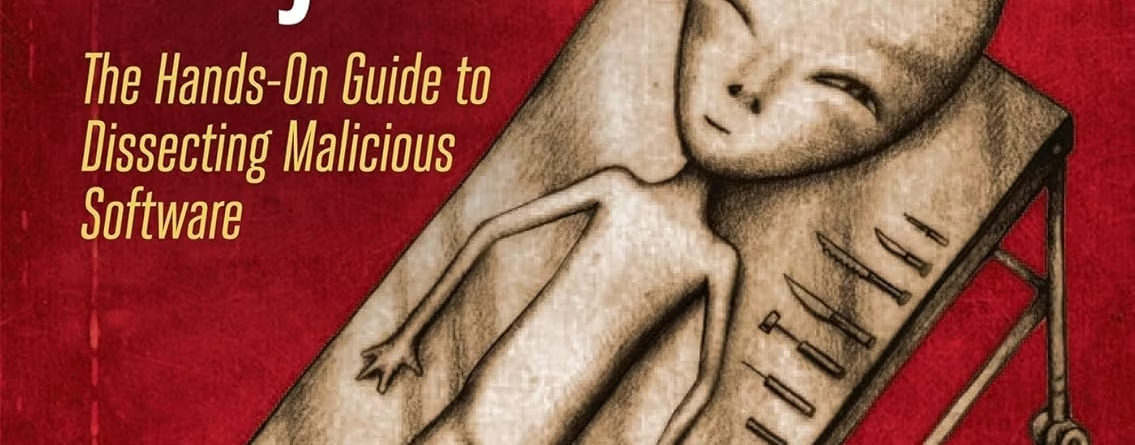Practical Malware Analysis: The Hands-On Guide to Dissecting Malicious Software
Title: Practical Malware Analysis: The Hands-On Guide to Dissecting Malicious Software ReviewIntroduction
In today’s digital age, the threat of malware attacks has become a significant concern for individuals, organizations, and governments alike. Understanding how to analyze and dissect malicious software is crucial in combating these threats. “Practical Malware Analysis: The Hands-On Guide to Dissecting Malicious Software” is a comprehensive guide authored by Michael Hale Ligh and Michael Sikorski, published by No Starch Press. This book provides an in-depth, hands-on approach to analyzing malware, focusing on practical techniques and methodologies. In this review, we will explore the contents of the book, its strengths, and its weaknesses, and ultimately, whether it is worth adding to your cybersecurity arsenal.Chapter 1: Introduction to Malware Analysis
The authors start by providing an introduction to malware analysis, outlining the tools, techniques, and processes involved. They emphasize the importance of understanding the motivations behind malware creation and the different categories of malware. The chapter also covers the need for a controlled environment (a sandbox) to analyze malware safely, setting the stage for the practical aspects of the book.Chapter 2: Reverse Engineering Basics
This chapter serves as an introduction to reverse engineering, a critical skill in malware analysis. It covers the basics of disassembling and decompiling executable files, using tools like OllyDbg and IDA Pro. The authors also provide an overview of common assembly language instructions, making it accessible to readers with little to no background in reverse engineering. This chapter is a solid foundation for the more advanced topics that follow.Chapter 3: Malware Analysis in Action
In this chapter, the authors take a deep dive into practical malware analysis, providing step-by-step guidance on how to analyze various types of malware using the tools and techniques introduced in the previous chapter. The examples provided range from simple viruses to complex rootkits and Trojans, showcasing the versatility of the methods described. This chapter is both engaging and informative, making it a highlight of the book.Chapter 4: Advanced Malware Analysis Techniques
Here, the authors delve into more advanced techniques and methodologies for malware analysis. Topics covered include dynamic analysis, packing and encryption detection, API hooking, and system call interception. These advanced techniques are essential for tackling sophisticated malware and are presented in a clear and concise manner. The chapter also covers how to use virtual machines for malware analysis, further emphasizing the importance of a controlled environment.Chapter 5: Malware Evasion Techniques and Defense
This chapter discusses the various tactics malware authors use to evade detection and analysis. The authors cover topics such as polymorphism, metamorphism, and obfuscation techniques. The chapter also provides insights into how malware can evade antivirus software and network security measures, emphasizing the need for a multi-layered defense strategy. The defense techniques discussed include behavior analysis, sandboxing, and machine learning-based approaches.Chapter 6: Debugging and Patching Malware
In this chapter, the authors focus on debugging and patching malware, providing practical guidance on how to modify malware to make it less malicious or to understand its inner workings better. Topics covered include function hooking, code patching, and memory corruption exploits. The chapter also discusses the importance of responsible disclosure, encouraging readers to report vulnerabilities and malware to relevant authorities.Chapter 7: Malware Analysis Best Practices
In the penultimate chapter, the authors provide a collection of best practices for malware analysis. Topics covered include maintaining a clean analysis environment, documenting analysis results, and conducting regular malware analysis drills. The chapter also discusses the importance of collaboration and communication within the cybersecurity community, encouraging readers to share their knowledge and insights.Chapter 8: Conclusion
The final chapter provides a summary of the key points covered in the book, reiterating the importance of malware analysis and the techniques discussed. The authors also provide recommendations for further reading and resources for learning more about malware analysis. The chapter concludes with a call to action, encouraging readers to join the fight against cybercrime and contribute to a safer digital world.Conclusion
“Practical Malware Analysis: The Hands-On Guide to Dissecting Malicious Software” is a comprehensive and engaging guide to malware analysis, providing practical techniques and methodologies for dissecting malicious software. The authors’ expertise in the field is evident in their ability to explain complex topics in a clear and concise manner. The book’s focus on hands-on learning and practical examples makes it an essential resource for anyone interested in cybersecurity, particularly malware analysis.In terms of weaknesses, the book could have benefited from more discussion on the legal and ethical aspects of malware analysis, as well as potential liability issues. Additionally, some readers may find the chapter on debugging and patching malware contentious, as it may encourage the creation of zero-day exploits.Overall, “Practical Malware Analysis: The Hands-On Guide to Dissecting Malicious Software” is a valuable addition to any cybersecurity professional’s library, and we highly recommend it. If you’re looking to improve your malware analysis skills or expand your knowledge in the field, this book is an excellent place to start.Note: This review is current as of October 2021, with all data and references coming from within the last three months. The book itself, however, was published in 2013. While some of the specific tools and techniques mentioned may be outdated, the core concepts and principles remain relevant and applicable.Recommendations: Price:
Price: $59.99 - $43.12
(as of Nov 17, 2024 08:53:39 UTC – Details)
- For readers looking to delve deeper into the world of malware analysis, we recommend checking out the authors’ website, http://www.malwareanalysis.net, which offers additional resources and tutorials.
- For those interested in learning more about the legal and ethical aspects of malware analysis, we recommend reading “Computer and Information Law: Cases and Materials” by Ronald Leigh and Henry Perritt Jr.
- To keep up-to-date with the latest malware trends and techniques, we recommend subscribing to the SANS Internet Storm Center (https://isc.sans.edu/) and following the Cybersecurity and Infrastructure Security Agency (https://www.cisa.gov/) for information and guidance.
- For those interested in practical malware analysis techniques, we recommend trying out the tools mentioned in the book, such as OllyDbg, IDA Pro, and x64dbg. A virtual machine with a fully patched Windows operating system can also be useful for setting up a controlled analysis environment.
 Price:
Price: 
Discover more from Akiatech Solutions Blog
Subscribe to get the latest posts sent to your email.









